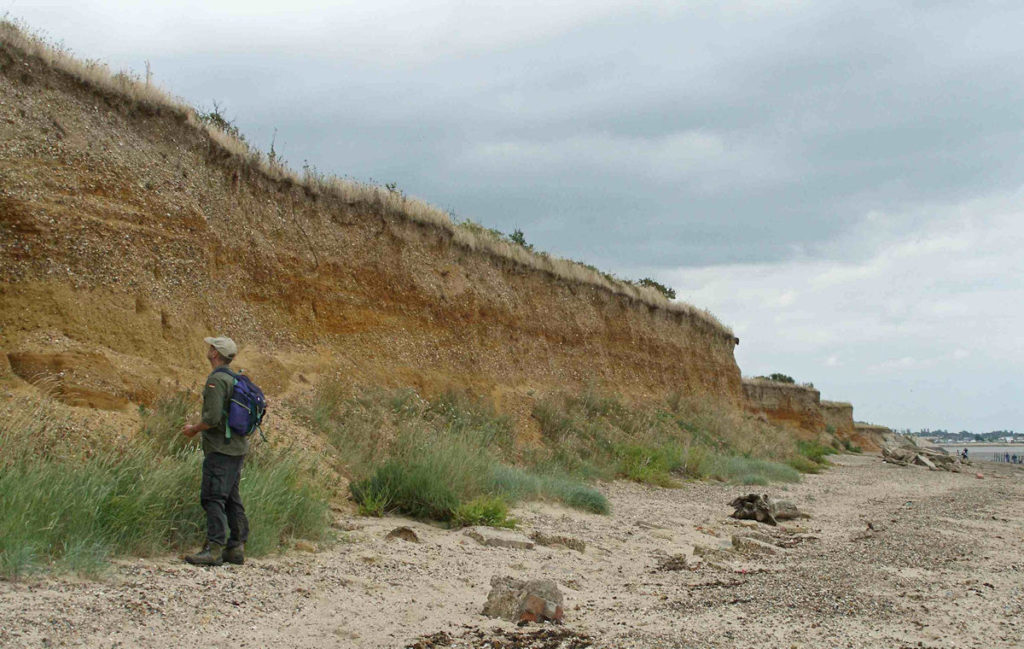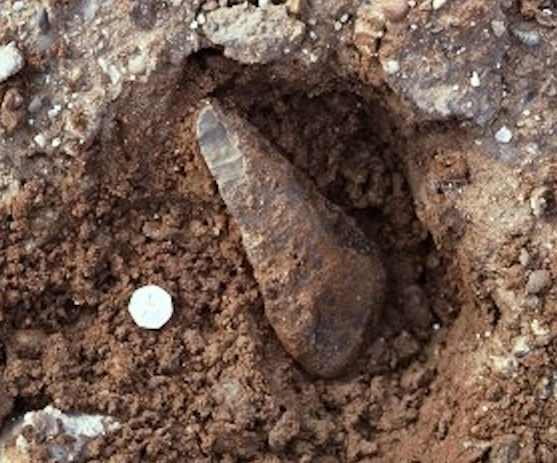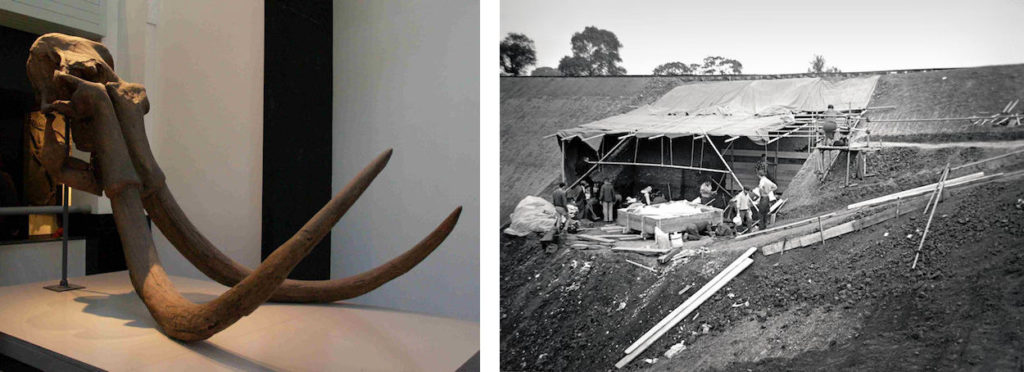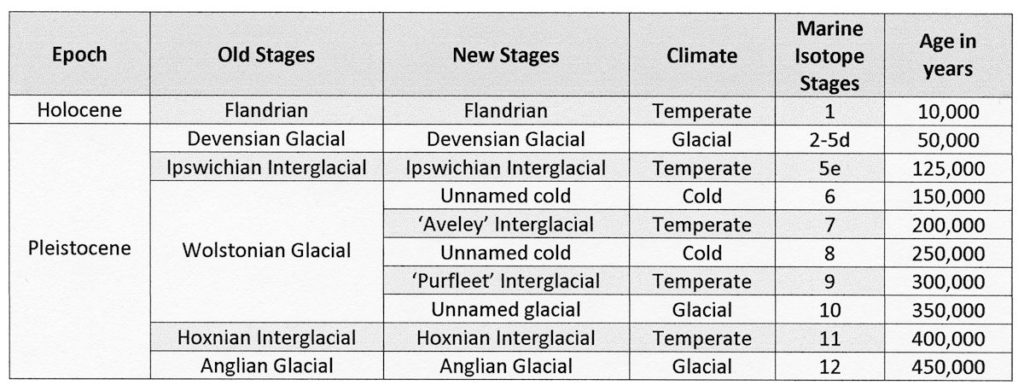Early Human Occupation in Essex
The first species of humans arrived in Britain over 700,000 years ago and evidence for this has been found in Norfolk. Although some worked flint tools from pre-Anglian deposits have been found in Essex, the earliest substantial evidence for human occupation in the county is from about 400,000 years ago, in deposits laid down immediately after the Anglian glaciation, during a warm interglacial stage known as the Hoxnian. Humans made their way north from Europe during this period taking advantage of the retreat of the ice.
The Thames had now been diverted south and flowed approximately along its present course but in the Southend area it turned north to Clacton along the old valley of the River Medway as the Thames-Medway River. This combined river laid down gravel which can be seen in the cliffs at Cudmore Grove Country Park in East Mersea. At Clacton similar gravels have yielded worked flints and it is these early flint tools that are the earliest evidence of humans in Essex.

Perhaps the most important Hoxnian site is Marks Tey Brick Pit, near Colchester, where lake sediments have revealed distinctive layers containing fossil pollen, revealing to geologists a remarkably detailed record of the vegetation living during this interglacial stage. Subsequent glacial and interglacial stages saw humans retreat from Britain and return when the climate improved. Numerous geological sites in Essex from these interglacial periods have revealed flint implements, most commonly beautifully crafted hand-axes.

The Modern Thames
The modern (post-diversion) Thames has numerous bench-like terraces on either side of the valley, the oldest being at the highest elevation. They were formed during subsequent cold (glacial) and warm (interglacial) stages. Terraces are formed as the river slowly cuts down through successive flood plains creating new flood plains at lower levels; each terrace containing fossils that reveal the flora and fauna of each of these periods. Geological sites in these terraces in south Essex are now being re-examined and are revealing a wealth of information making them some of the most important sites in Europe for the study of this middle period of the Ice Age.
The working of brick clay at Ilford in the mid 19th century yielded the bones of numerous of mammoths and woolly rhinoceroses in the former pits. The largest complete mammoth skull ever found in Britain (the ‘Ilford mammoth’) was discovered here. Downstream, there are many other sites such as at Aveley, where a clay pit yielded the famous Aveley elephants, and Grays, which produced a huge quantity of fossil bones from the brick pits in the early 19th century.

Timescale of the Ice Age
In Essex there is evidence for great swings of climate since the Anglian glaciation, 450,000 years ago, with four temperate stages at least as warm as today, separated by cold stages with arctic conditions. About 20 years ago only two of these warm stages were known, but evidence from Essex, particularly Thurrock, has been extremely important in unravelling a more complex climate history.

For a comprehensive timescale of the Ice Age in Essex click here
Marine Isotope Stages (MIS)
Not all of the climate stages shown in the tables above have been named, but they have been identified by numbers on the ‘global oxygen isotope curve’ which is based on the ratio of oxygen isotopes in marine molluscs and air bubbles trapped in glacial ice. These ratios provide us with the global temperature with some accuracy over the last several hundred thousand years.
The colder periods have been given even numbers and the warmer periods odd numbers. The Anglian glacial stage, for example (which witnessed diversion of the Thames), is Marine Isotope Stage 12 (MIS 12). The two new warm stages date from Marine Isotope Stages 7 and 9. These warm stages have not yet been formally named, but likely names are the ‘Purfleet’ Interglacial (about 300,000 years ago) and ‘Aveley’ Interglacial (about 200,000 years ago) respectively.
